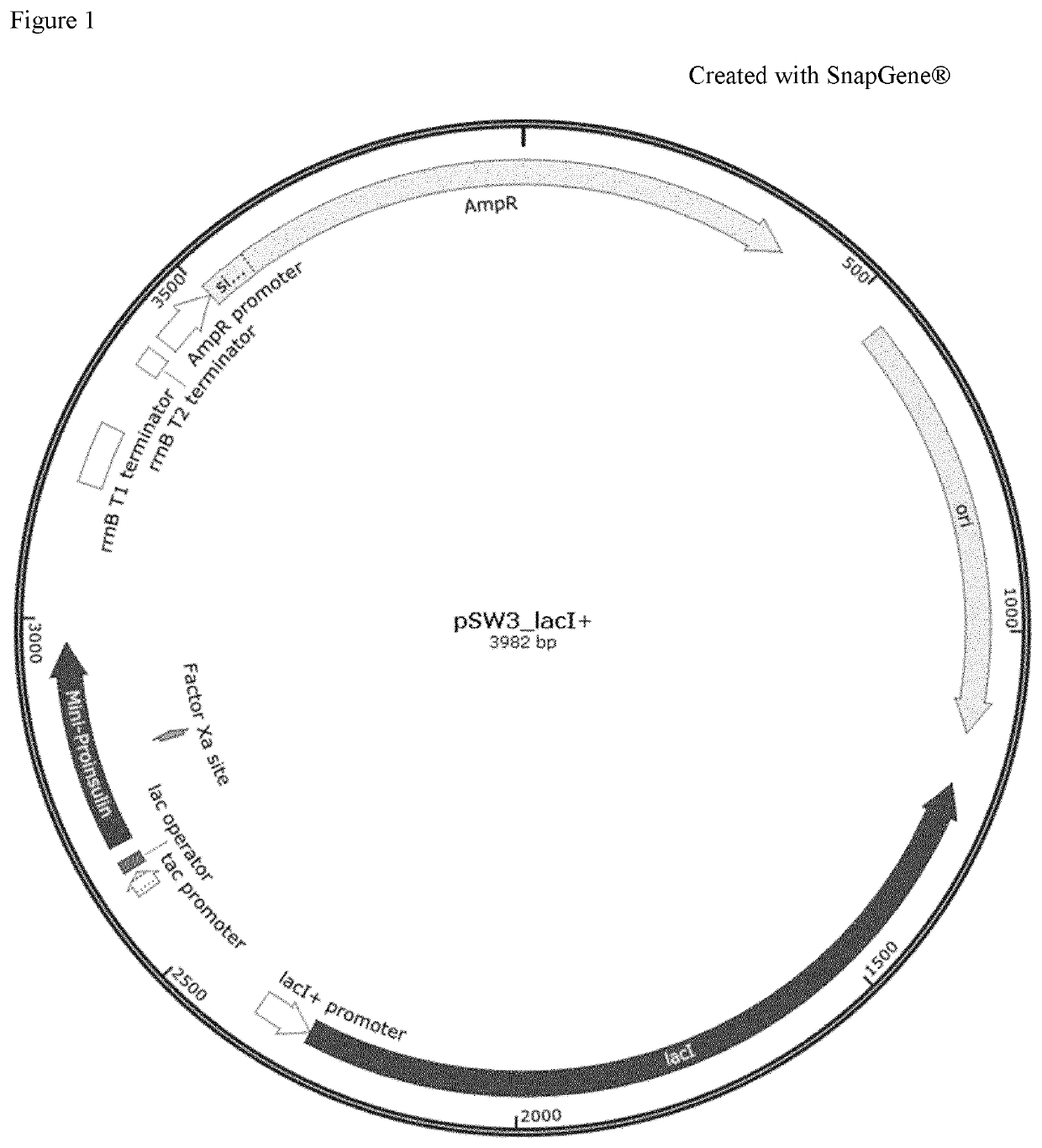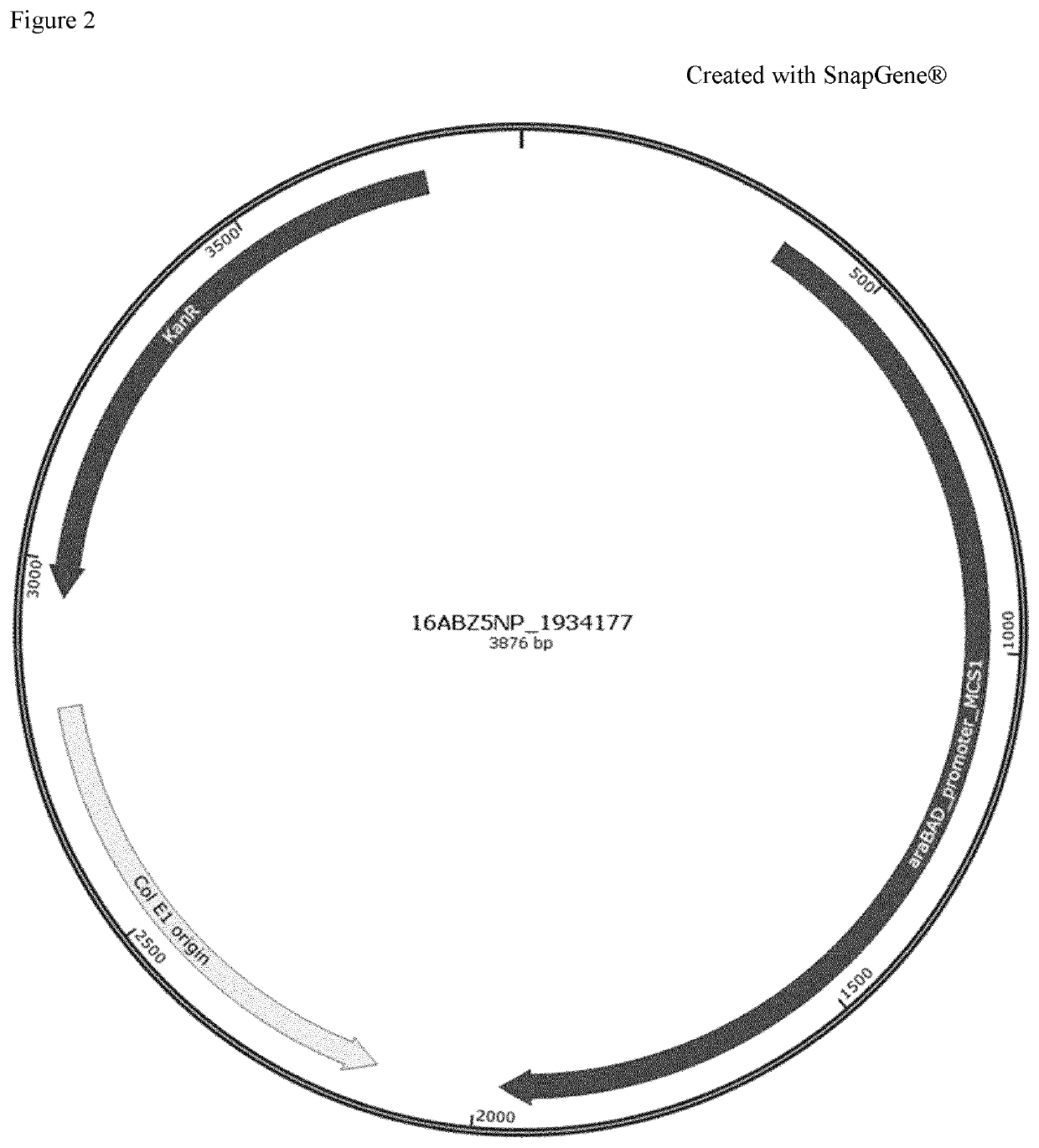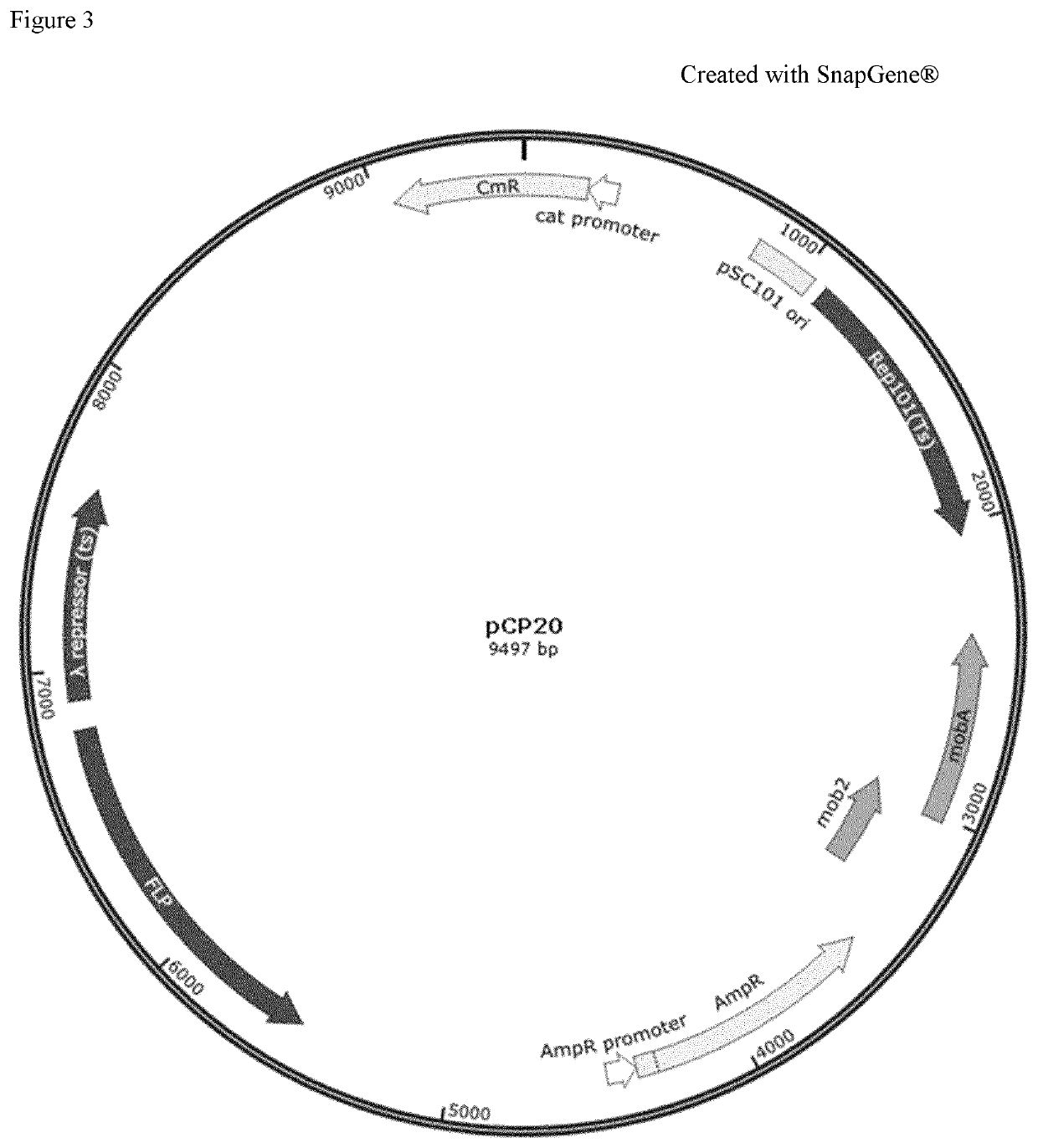Method for reducing misincorporation of non-canonical branched-chain amino acids
a technology of branched-chain amino acids and amino acids, which is applied in the field of reducing the misincorporation of non-canonical branched-chain amino acids, can solve the problems of potential overflow metabolism, misincorporation of unwanted amino acids into recombinant proteins, and protein misfolding or non-wanted amino acids,
- Summary
- Abstract
- Description
- Claims
- Application Information
AI Technical Summary
Benefits of technology
Problems solved by technology
Method used
Image
Examples
example 1
Transformation of K12 BW25113 ΔhrA, ΔilvA, ΔilvC, ΔilvIH and ΔilvBN Mutants with Plasmid pSW3_lacl+
[0208]ΔthrA, ΔilvA, ΔilvC Knock-Outs
[0209]Strain E. coli K12 BW25113 as well as single knock-out mutants E. coli K12 BW25113 ΔthrA, ΔilvA and ΔilvC were acquired from the E. coli Genetic Stock Center (CGSC) of Yale University. Those mutant strains belong to the so-called KEIO collection (Baba, T., Ara, T., Hasegawa, M., Takai, Y., Okumura, Y., Baba, M., . . . & Mori, H. (2006). Construction of Escherichia coli K-12 in-frame, single-gene knockout mutants: the Keio collection. Molecular systems biology, 2(1)). These strains contain plasmid pKD46 (FIG. 8) and a kanamycin resistance marker substituting target gene. CGSC identification for each acquired strain is indicated as follows:
StrainCGSC identification numberE. coli K12 BW251137636E. coli K12 BW25113 ΔthrAJW0001-1E. coli K12 BW25113 ΔilvAJW3745-2E. coli K12 BW25113 ΔilvCJW3747-2
[0210]Plasmid pKD46 was curated from the acquired E. col...
example 2
Design and Generation of an araC-PBAD Tunable Expression Vector (pACG_araBAD)
[0212]An arabinose-based tunable expression plasmid, allowing regulation of genes of study, previously knocked-out, was obtained by the junction of 3 different DNA segments: Fragment 1 contains the araC-PBAD promoter region (Guzman et al., 1995, Tight regulation, modulation, and high-level expression by vectors containing the arabinose PBAD promoter. Journal of bacteriology, 177(14), 4121-4130), UTRs, T7 terminator, a cloning site allowing gene cloning with rare-cutting restriction enzymes Nhel and Notl and a C-terminal 6×his-tag sequence allowing expression of fusion proteins. Fragment 2 contains a chloramphenicol resistance cassette while fragment 3 includes the ori2 origin of replication and genes sopA, sopB, sopC and repE.
[0213]Fragment 1 was chemically synthesized and subsequently cloned in plasmid 16ABZ5NP_1934177 (FIG. 2). Fragment 1 was then amplified by PCR from plasmid 16ABZ5NP_1934177. Fragments ...
example 3
Cloning of the Target Genes into the Tunable Expression Vectors
[0214]Genes of study (ilvA, ilvC, ilvIH, ilvBN, and thrA) were amplified by PCR from the E. coli K12 BW25113 genomic DNA and they were subsequently cloned into the previously generated tunable expression plasmid (FIG. 5) by using restriction enzymes Nhel and Notl. ilvGM was amplified from an E. coli strain where ilvG was not mutated. As example, plasmid map of the resulting arabinose-tunable plasmid pACG_araBAD_ilvIH is shown in FIG. 6.
PUM
| Property | Measurement | Unit |
|---|---|---|
| Volume | aaaaa | aaaaa |
| Therapeutic | aaaaa | aaaaa |
Abstract
Description
Claims
Application Information
 Login to View More
Login to View More - R&D
- Intellectual Property
- Life Sciences
- Materials
- Tech Scout
- Unparalleled Data Quality
- Higher Quality Content
- 60% Fewer Hallucinations
Browse by: Latest US Patents, China's latest patents, Technical Efficacy Thesaurus, Application Domain, Technology Topic, Popular Technical Reports.
© 2025 PatSnap. All rights reserved.Legal|Privacy policy|Modern Slavery Act Transparency Statement|Sitemap|About US| Contact US: help@patsnap.com



